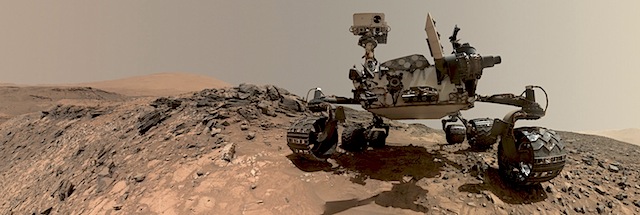 Scientists have discovered an unexpected mineral in a rock sample at Gale Crater on Mars, a finding that may alter our understanding of how the planet evolved.
Scientists have discovered an unexpected mineral in a rock sample at Gale Crater on Mars, a finding that may alter our understanding of how the planet evolved.
NASA’s Mars Science Laboratory rover, Curiosity, has been exploring sedimentary rocks within Gale Crater since landing in August 2012. In July 2015, on Sol 1060 (the number of Martian days since landing), the rover collected powder drilled from rock at a location named “Buckskin.” Analyzing data from an X-ray diffraction instrument on the rover that identifies minerals, scientists detected significant amounts of a silica mineral called tridymite. (…)
The discovery of tridymite might induce scientists to rethink the volcanic history of Mars, suggesting that the planet once had explosive volcanoes that led to the presence of the mineral.
Scientists in the Astromaterials Research and Exploration Science (ARES) Division at NASA’s Johnson Space Center in Houston led the study. A paper on the team’s findings has been published in the Proceedings of the National Academy of Sciences.
“On Earth, tridymite is formed at high temperatures in an explosive process called silicic volcanism. Mount St. Helens, the active volcano in Washington State, and the Satsuma-Iwojima volcano in Japan are examples of such volcanoes. The combination of high silica content and extremely high temperatures in the volcanoes creates tridymite,” said Richard Morris, NASA planetary scientist at Johnson and lead author of the paper. “The tridymite was incorporated into ‘Lake Gale’ mudstone at Buckskin as sediment from erosion of silicic volcanic rocks.” [More at link]








